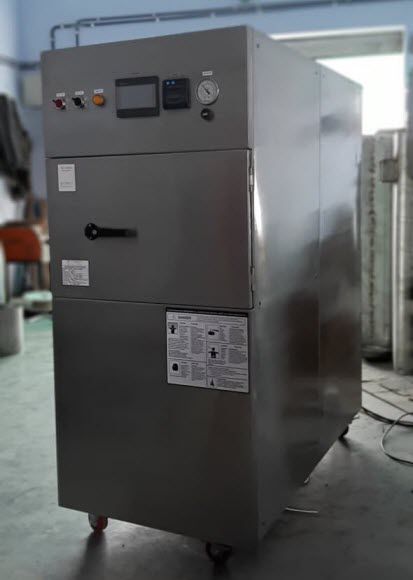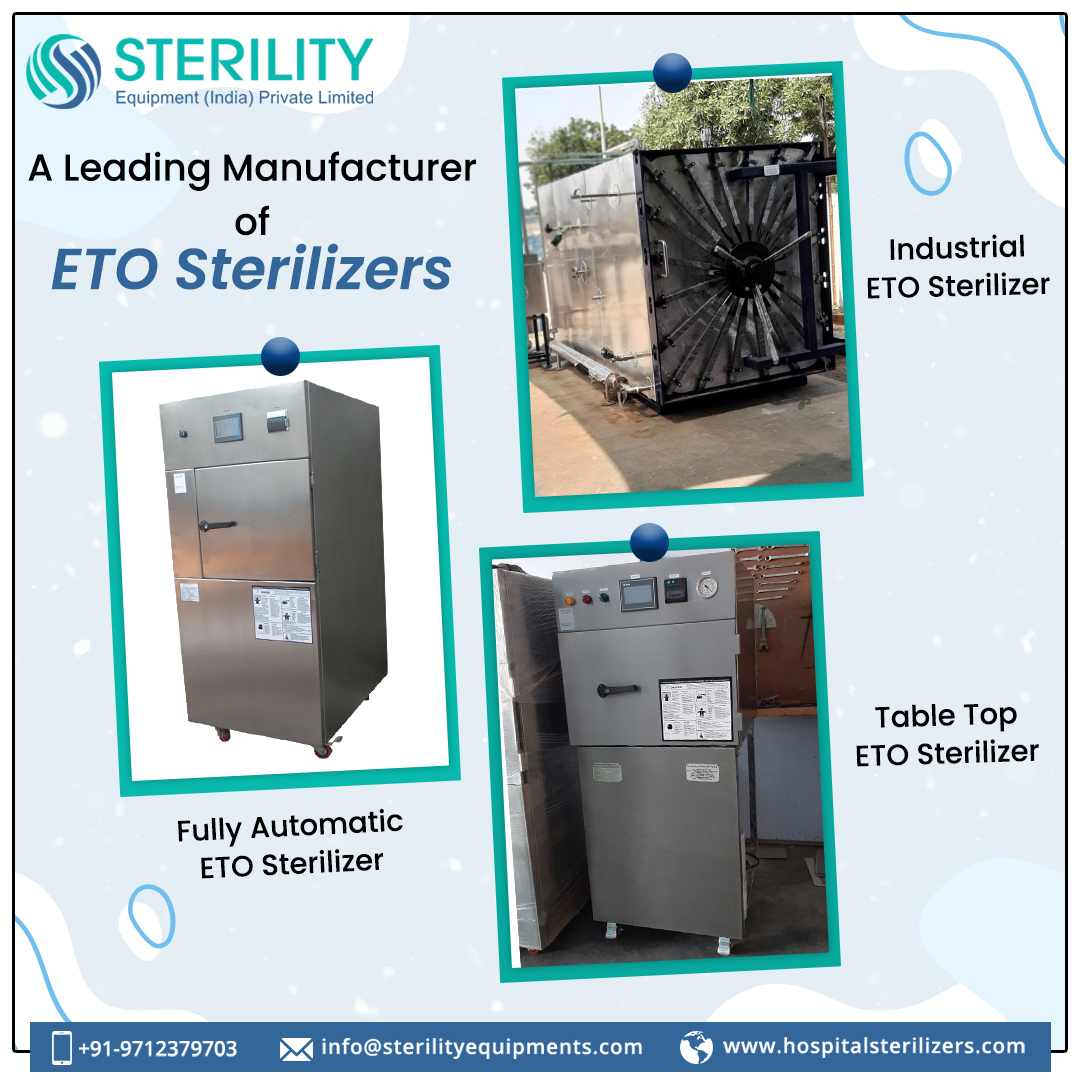In this detailed guide, we provide valuable insights into the regulatory landscape governing ETO sterilizers in Germany. Compliance with these regulations is of utmost importance for businesses operating in the healthcare and medical industries.
German regulatory bodies, such as the Federal Institute for Drugs and Medical Devices (BfArM) and the German Medical Devices Act (MPG), play a vital role in setting and enforcing industry standards. These regulations encompass various aspects, including microbial reduction rates, validation procedures, and packaging requirements.
Complying with the specified standards not only ensures the safe sterilization of medical equipment and devices but also helps maintain the integrity and reputation of businesses in the market. Failure to meet these rigorous requirements can lead to severe consequences, including legal penalties and damage to brand credibility.
It is essential for businesses to stay up-to-date with the latest regulations and best practices related to ETO sterilization in Germany. This comprehensive guide equips you with the knowledge and understanding necessary to navigate the complex regulatory landscape effectively. By embracing compliance, businesses can thrive in the German market while upholding the highest standards of quality and safety in sterilization processes.
The Importance of ETO Sterilization Compliance in Germany
In Germany’s healthcare and medical industries, adhering to ETO sterilization regulations is of utmost importance for businesses. These regulations are designed to ensure the safety and efficacy of sterilization processes, making compliance a critical factor for success.
Failure to comply with ETO sterilization regulations can have severe implications for businesses. Non-compliance may lead to legal repercussions, fines, and penalties, tarnishing a company’s reputation and credibility. Additionally, it can jeopardize the well-being of patients and healthcare workers, potentially causing harm or infections due to inadequately sterilized medical equipment.
On the other hand, businesses that meet the rigorous standards set forth by German authorities can enjoy several benefits. Compliant companies are more likely to gain the trust and confidence of customers and partners, resulting in increased business opportunities and a competitive edge in the market.
By following the prescribed guidelines, businesses can ensure the consistent and reliable sterilization of medical devices, contributing to enhanced patient safety and better overall healthcare outcomes. Moreover, adherence to these standards demonstrates a commitment to quality, professionalism, and ethical practices, enhancing the brand’s reputation.

Complying with ETO sterilization regulations also provides a strategic advantage when entering new markets or seeking certifications and accreditations. It serves as evidence of a business’s dedication to meeting international standards, fostering trust with global partners and customers.
Key Regulatory Bodies and Their Role
In Germany, the compliance and standards for ETO sterilizers are overseen by key regulatory bodies that play a pivotal role in ensuring the safety and efficacy of medical devices and equipment.
Federal Institute for Drugs and Medical Devices (BfArM)
The BfArM is a central regulatory body responsible for overseeing medical devices, pharmaceuticals, and other healthcare products in Germany. In the context of ETO sterilizers, the BfArM sets essential guidelines and regulations to ensure that these devices comply with the highest safety and performance standards.
The BfArM assesses the technical documentation submitted by manufacturers, reviews the design and performance specifications of ETO sterilizers, and issues approvals or certifications for compliant devices. Additionally, they monitor post-market safety data and take appropriate actions if any issues arise, ensuring continuous compliance and patient safety.
German Medical Devices Act (MPG)
The German Medical Devices Act (MPG) forms the legal framework for regulating medical devices in Germany. Under the MPG, ETO sterilizers are categorized as medical devices and must meet specific requirements to be marketed and used within the country.
The MPG outlines the obligations of manufacturers, importers, and distributors regarding quality assurance, safety measures, and product documentation. It also empowers the authorities to conduct inspections, review technical documentation, and enforce penalties for non-compliance.
Both the BfArM and the MPG work collaboratively to enforce stringent regulations, ensuring that ETO sterilizers meet the highest standards of quality and safety. They aim to protect patients, healthcare professionals, and the public by upholding the integrity of medical devices used in Germany.
Understanding the roles of these regulatory bodies is crucial for manufacturers and businesses involved in the production and distribution of ETO sterilizers. Complying with their guidelines is not only a legal requirement but also an ethical responsibility to ensure the well-being of patients and the credibility of the healthcare industry.
German Standards for ETO Sterilization
One of the critical aspects of ETO sterilization is achieving appropriate microbial reduction rates. German standards require ETO sterilizers to demonstrate the ability to eliminate a high percentage of microorganisms present on medical devices. The validation process involves conducting microbiological tests to confirm that the sterilization process effectively reduces microbial contamination, preventing the risk of infections.
ETO sterilizer manufacturers must follow well-defined validation procedures as per German standards. This process involves extensive testing and documentation to verify that the sterilization cycle consistently achieves the desired results. Validation ensures that the sterilizer operates within specified parameters and that the entire process is repeatable and reliable.
Proper packaging is crucial to maintain the sterility of medical devices after undergoing ETO sterilization. German standards outline specific packaging requirements to protect the devices from contamination during storage and transportation. The packaging materials must be compatible with the sterilization process and provide an effective barrier against potential contaminants.
ETO sterilization utilizes ethylene oxide gas, which can leave behind residual gas in sterilized devices. German standards set limits on the allowable amount of residual gas to ensure the safety of healthcare professionals and patients. Additionally, the emissions released during the sterilization process are strictly regulated to minimize their impact on the environment.
ETO sterilization must not compromise the biocompatibility of medical devices. Manufacturers must ensure that the materials used in the devices can withstand the sterilization process without causing adverse reactions or compromising their integrity. This consideration is vital to avoid potential harm to patients and to maintain the functionality of the medical devices.
German standards emphasize the importance of process monitoring and traceability throughout the sterilization cycle. Manufacturers must implement robust monitoring systems to track critical parameters, such as temperature, pressure, and gas concentration, ensuring that the sterilization process remains within specified limits. Detailed records and documentation are necessary to provide traceability and demonstrate compliance with regulations.
Navigating Emissions and Environmental Regulations
ETO sterilization involves the use of ethylene oxide gas, which can have adverse effects on the environment if not properly managed. Ethylene oxide is a volatile organic compound (VOC) known to contribute to air pollution and potentially harm human health. It is essential to address these concerns to reduce the environmental impact of the sterilization process.
German authorities have established stringent regulations to control emissions from ETO sterilization facilities. These regulations aim to limit the release of ethylene oxide and other harmful by-products into the atmosphere. Sterilization facilities must obtain permits and comply with emission limits set by the authorities to ensure the protection of air quality and public health.
To minimize the ecological footprint of sterilization processes, businesses can explore eco-friendly alternatives to ethylene oxide. One such alternative is hydrogen peroxide gas plasma sterilization, which offers an effective and environmentally friendly method for sterilizing medical devices. Hydrogen peroxide breaks down into harmless by-products, making it a greener option compared to ethylene oxide.
Proper waste management is crucial to minimize the environmental impact of ETO sterilization. Sterilization facilities should implement effective waste segregation and disposal practices to handle potentially hazardous materials responsibly. Recycling efforts should be encouraged wherever possible to reduce waste and conserve resources.
Embracing a culture of continuous improvement and innovation is vital in the pursuit of eco-friendly sterilization practices. Research and development efforts should focus on finding new, sustainable technologies and materials that align with environmental goals while maintaining sterilization efficacy.
By navigating emissions and adhering to environmental regulations, businesses can demonstrate their commitment to environmental stewardship while ensuring the safety and quality of medical devices. Embracing eco-friendly alternatives and adopting efficient sterilization strategies are crucial steps in reducing the ecological footprint of ETO sterilization processes, contributing to a cleaner and more sustainable future.






